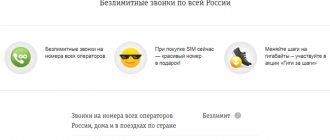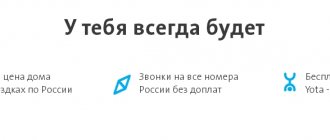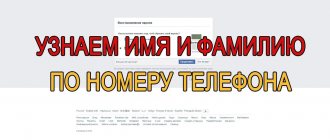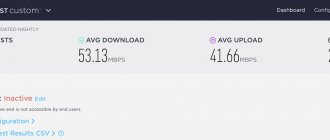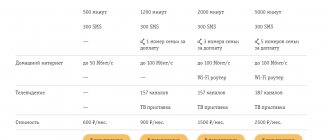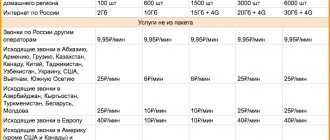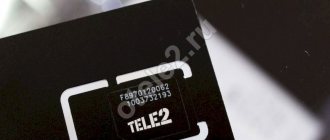What is the coverage area of tele 2 - a potential subscriber, attracted by a favorable tariff, often wonders. This question is far from idle. For people who often travel on business or vacation to other regions, it is important to know how stable their operator’s communications will work there. This information is also relevant for residents of rural areas. After all, many rural settlements do not yet have a stable cellular signal.
Tele2 cell towers on the map
The mobile operator Tele2 is developing rapidly and is steadily expanding its coverage area and communication quality. Tele2 cell towers on the map below allow you to verify this; their number is sufficient to provide stable coverage to most regions of our country.
- Tele2 base stations operate on equipment from Nokia Networks and Flexi Multiradio
- The company is currently working towards the development of the 4G communication format
- Stations are located everywhere: rooftops, roadsides, subways and other places
Coverage regions
In 2003, a resident of Kaliningrad, who often went on business trips to Ufa, really had to clarify whether his SIM card would receive communication in Bashkortostan or not. The operator had just entered the Russian market and tele2 coverage was very small.
Attention! The computer model of the map is informational; the actual coverage area of the Tele2 network may differ from the simulated data. The differences can be either towards a more confident reception or vice versa.
Factors affecting the quality and reception area of the Tele2 Mobile network:
- Weather conditions: fog, rain, snow.
- The terrain in the reception area is mountains and lowlands.
- The presence of obstacles interfering with the signal propagation, walls, buildings.
- Equipment quality.
Equipment
Our inquisitive readers are probably interested in knowing which towers Tele2 operates on? The telecommunications equipment that this cellular operator uses is truly first-class. Nokia Networks and Flexi Multiradio are the towers Tele2 uses, and these manufacturers produce the latest generation equipment.
Now this mobile operator aims to provide its customers with an uninterrupted signal in 4G format and is successfully working in this direction - residents of large cities have already seen this. In Moscow, St. Petersburg and many other cities, there is an LTE signal even in the metro. To verify this, we recommend reading the article about the Tele2 coverage map in the metro, which is available on our website.
Determination of frequency and traffic consumption
To configure frequencies, a number of encodings are provided for Android:
- *#0011#;
- *#*#197328640#*#*;
- *#*#4636#*#*.
On iPhone, enter *3001#12345#* . The user will receive accurate data in the response message. To determine the indicator, the subscriber can use mobile applications such as CellMapper. To obtain information through the provider’s resource, you need to go to its website, select your region and go to the “Coverage Map” section.
Having found out at what frequency 4G Tele2 works normally and how to use it, you should find out how much Internet traffic a particular network consumes. To obtain numbers, you can periodically order itemized expenses. In the column where traffic data is displayed, the user will be able to see the cost and consumption of the Internet connection.
Tele2 is constantly developing its coverage area. To get the latest information via 3G or 4G, just open the online map on the website and in the “Settlement” section indicate the name of the city/village/village. To check whether the mobile phone and SIM card support communication in this format, you need to dial *156#.
How they work
How does a standard base station work? In a nutshell, your SIM card receives the signal issued by the nearest tower, thereby providing you with various communication services - the ability to make calls, receive and send SMS messages, and mobile data transfer. When a person moves with the phone turned on, the device will invariably receive a signal from the nearest tower, that is, switch between them. This way the connection will always be good. The exception is when something interferes with the signal - for example, you are in a basement where no additional equipment is installed, or you have gone out of town and the nearest station is quite far from you.
4G activation rules and parameters
When the Tele2 network frequency is determined, you should check your smartphone. Sometimes the SIM card or the device itself may not support high network resolution. You can find out via SMS request *156# . The reply message will contain complete information. To change the mobile Internet, automatic settings are provided, which can be ordered through the combination 679 or through the provider’s virtual portal. In the second case, enter the query “get settings for mobile Internet” in the search bar.
The truth about cell towers
more than 744 thousand have been built in Russia , which allow us to use our gadgets, make calls, download music and surf the Internet.
Each tower has its own owner, one of the Big Three operators. Below I have collected data that will certainly help you make a decision: which operator to connect to in the future.
Not only the quality of coverage, but also the speed of data transfer and mobile Internet depends on the number of towers in the assets of each operator.
According to Roskomnadzor, more than 300 thousand cell stations support the most modern communication format: 4G/LTE/LTE Advanced.
All these stations together provide high-speed Internet to more than 90% of all residents in 83 regions of Russia.
Tele2 in Russia
Over the past few years, the operator has expanded its zone of “influence”. But even today there are cities and regions where the company does not have towers. Moreover, in some places they are not even planning to install them.
2G communications are the most widespread throughout the country. It is considered the most affordable and is designed to transmit data at a speed of about 19.5 Kbps. Of course, this is very slow, but you can use such a channel even in the subway. Ideal for messaging via instant messengers or email.
But the 3G frequency in Russia is not so widespread. If you look at the map of the towers, the coverage area of this signal is insignificant. Moreover, in some regions it functions only in the capital, but as soon as you move a couple of kilometers from the city, the connection disappears. Internet speed is 3.6 Mbit/s. This is enough to download files and watch videos.
Who owns cell towers
The list of operators by the number of their own towers looks like this:
MegaFon - more than 238 thousand cell stations.
MTS – about 184 thousand cellular stations.
T2 Mobile – 167 thousand cellular stations.
Beeline - more than 156 thousand cell stations.
All four operators own a total of about 80% of all towers. The remaining 20% is owned by third-party organizations, such as Russian Tower and Vertical. These towers are rented to operators for relatively little money, from 15 to 30 thousand rubles per month.
The most advanced operator is MegaFon, which has the most stations, which means the widest network coverage in Russia. Roskomnadzor data also confirms MegaFon's leadership in the number of LTE base stations.
Cell tower close up.
To provide good coverage and high speeds of mobile Internet, operators have to build base stations in a variety of locations.
For example, what MegaFon towers look like in the most remote places:
The towers are installed in the city of Verkhoyansk and the village of Tomtor, in the Republic of Sakha Yakutia, where the temperature drops to -68 degrees.
The cellular station was built 500 meters from the launch field of the Vostochny cosmodrome in the Amur region
The base stations in the Sochi Olympic Park are disguised as palm trees so as not to be conspicuous.
A cell station on the Kola Peninsula is needed for drivers, because there are no cities nearby. Powered by a wind generator.
A cell tower in the rotational village of Sabetta on the Yamal Peninsula, which allows you to post a photo on Insta literally from the ends of the earth.
Network coverage maps were found on the website Speedtest.net. The list of operators is arranged in this order:
1. MegaFon 2. MTS 3. Beeline 4. Tele2
MegaFon has the densest coverage, followed by MTS, which has less dense coverage in the Southern Federal District. Next comes Beeline, and in last place is Tele2.
What are the forecasts for the future?
In anticipation of the emergence of new 5G networks with increased capacity, all operators are preparing to modify their base stations.
MegaFon and Beeline actively cooperate with Huawei, the main supplier of 5G equipment around the world.
MTS works with Ericsson, and Tele2 works with Nokia.
Back in 2021, all operators successfully conducted tests related to preparing for the introduction of 5G. Moreover, MegaFon showed the best results: the speed of data reception using the new technology in the networks of this operator reached 35 Gbit .
MTS, together with Ericsson, showed the maximum speed on test equipment in the region of 25 Gbit .
Beeline, despite its partnership with Huawei, reported speeds of more than 1 Gbit/sec .
Considering all the facts, MegaFon will be the first to launch 5G in Russia . This is facilitated by the largest number of base stations and cooperation with Huawei.
The arrival of the next generation cellular network is only a matter of time. The operators are already ready for it.
(
4.37 out of 5, rated: 38)
The whole truth about Tele2 in Moscow
This is a discount store
Initially, Tele2 is a Swedish discount company, a kind of IKEA in the telecommunications market. Maximum cost reduction (to the point that top managers fly on business trips with low-cost airlines rather than business class) and careful cost optimization (there are approximately half as many employees per subscriber as competitors) allow us to keep prices below the market average. When entering new markets, the operator often resorted to a cellular discounter policy, and in Russia, after Tele2 entered another region, prices from other operators often fell by as much as 20-30%.
These are not Swedes
In 2013, the Swedes Tele2 AB sold the company to structures that resold it to the state-owned Rostelecom. The fact is that over the course of 10 years of work in Russia, Tele2 has not been able to obtain permission to launch 3G and LTE networks - even on existing frequencies (so-called “technological neutrality”). While little was required from mobile communications - calls and SMS - this was not critical, but there were fewer and fewer people willing to be content with the Internet with the eternal letter E on the screen. Ultimately, after the sale, officials allowed “technical neutrality”, and the new owners, represented by Rostelecom, contributed licenses for 3G frequencies originally allocated to Sky Link.
Tele2 does not have GSM frequencies in Moscow
In Moscow, Tele2 will only have 3G networks (in the range of 2100 MHz) and LTE (2600 MHz) - the frequency resource in these ranges is the same as that of MegaFon, MTS and Beeline. The operator also has LTE-800 frequencies, which they promised to use at the start, but after that a number of media outlets, citing informed sources, reported that LTE-800 would not appear immediately. We'll tell you how it turns out in the end. But the operator will not have a GSM network at all. On the one hand, this is good: you simply physically cannot get into the zone where the phone switches to the GSM/EDGE network, depriving you of the opportunity to use the Internet with any comfort. On the other hand, try turning on the “3G Only” mode on your smartphone and taking a walk around the capital. You will immediately discover many places where the device loses the network. This is understandable: GSM base stations operate at a lower frequency and, as a rule, with higher power, due to which the signal penetrates better into buildings and spreads better outside the city. The promised LTE-800 also has good range, but it is far from the efficiency of GSM, and Russia has not yet allowed voice transmission over LTE - it will only work in 3G. Well, owners of dialer phones without 3G support are not allowed to join Tele2.
Tele2 offers mainly package tariffs
Tele2 focuses on package tariff plans with included minutes and SMS. They are called "Black", "Very Black" and "Blackest". Offers are focused in the lower and middle price segments. The maximum subscription fee in the regions does not exceed 400 rubles per month, and the basic package costs less than 100 rubles. There are also tariffs without a monthly fee with per-minute calls, and there are also tariffs for business subscribers.
Tele2 is not the cheapest operator. But honest
Once upon a time, Tele2’s slogan was: “Always cheaper.” Then, from banal dumping in pursuit of low prices, there was a reorientation to the optimal price-quality ratio. Now prices differ slightly from the market average, so Tele2 positions itself as an “honest” operator. Honesty lies, firstly, in transparency of tariffs. That is, you will not find any asterisks, hidden conditions, etc. in their description. Other operators, in general, also long ago realized that no one believes in fairy tales like “EVERYTHING IS FREE*. *- the subscription fee of 100,500 rubles per day is not charged every February 29,” but the positioning has been preserved. Secondly - and this is perhaps more important - Tele2 does not quietly connect various services that later unexpectedly become paid, and also does not practice subscriptions, premium traffic tariffication and other rubbish (only Yota does better with this), therefore there are fewer complaints about mobile fraud from its subscribers than the Big Three. However, Tele2, like everyone else, quite allows itself to raise prices for already connected subscribers.
Tele2 has additional services
Tele2 will not offer you any innovations. You won’t be able to pay for subway fares by phone, or any kind of IP telephony: the operator quite rightly believes that almost none of the subscribers know about these services anyway and don’t understand why they are needed, and of those who know and understand - almost no one uses it. The advantages, at a minimum, are that no one will pester you with advertisements for these things, slipping them in anywhere, right down to balance information. At the same time, however, there is mobile television, determining the location of other subscribers, “Replace the dial tone”, “Who called” and a personal account on the site - in general, everything that may be needed, in addition to calls and the Internet. Prices for services are average market prices.
What tariffs does the operator offer?
Tariff designer from Tinkoff Mobile includes the following services:
- Minutes within Russia, to mobile and landline phones – 200 min. for 99 rub., 400 min. for 139 rubles, 600 min. for 199 rubles, 1200 min. for 359. All-Russian unlimited connection is available - it costs 999 rubles/month;
- Internet traffic can be spent for any purpose - 2 GB for 199 rubles, 5 GB for 269 rubles, 10 GB for 389 rubles and 20 GB for 449 rubles. Unlimited traffic will cost 999 rubles. Packages are distributed free of charge, but if you connect to unlimited it will cost an additional 399 rubles;
- Unlim for messengers - unlimited access to imo.im, Facebook Messenger, iMessage, TamTam, Viber and WhatsApp for 49 rubles;
- Unlim for social networks - unlimited access to Tinder (dating), Snapchat, Instagram and IGTV, Facebook, Twitter, VKontakte and Odnoklassniki for 59 rubles;
- Unlim for music - unlimited traffic for Apple Music, Yandex.Music, Yandex.Radio, Google Play Music, Soundcloud, Boom, Zvooq, Deezer Music, Shazam and Spotify for 59 rubles/month (additionally, a subscription to Yandex.Music is connected to get the full access to millions of tracks without advertising);
- Unlim for video - stop traffic for Vimeo, RuTube, YouTube and YouTube for Children, iTunes Video, Google Play Video, Twitch (game broadcasts) for 159 rubles/month.
Another affordable package is unlimited SMS within Russia for 49 rubles/month. The term for payment for services is 30 days. Please note that unlimited services can be activated without the main traffic package.
The cost of calls within Russia when choosing a zero package is 2.9 rubles/min. Sending SMS without unlimited – 2.9 rubles/pcs.
It’s very easy to connect - fill out an application on the operator’s official website and the operator will give the first month of communication free of charge, indicate the desired time of arrival of the courier, sign an agreement and receive an active SIM card at your disposal. It is also possible to connect at company offices and dealer centers (Euroset, Svyaznoy). But the easiest way is to get a SIM card by courier - delivery is free.
Rate this article
0
Author
Vyacheslav
For several years he worked in mobile phone stores of two large operators. I understand tariffs well and see all the pitfalls. I love gadgets, especially Android ones.
